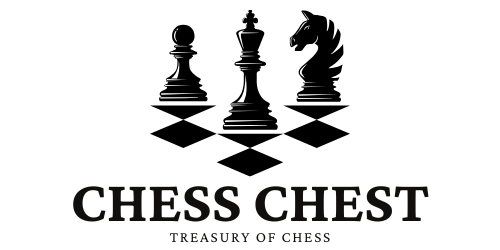Organizing an online chess tournament is a fantastic way to bring players together for a fun, competitive experience. Whether you’re hosting a small tournament for friends or a larger event open to the public, a well-structured tournament can provide an enjoyable and memorable experience for all participants. In this article, we’ll walk you through the key steps for organizing your first online chess tournament, from planning and setup to running the event smoothly.
1. Define Your Tournament Format and Rules
The first step in organizing a chess tournament is to decide on the format and rules. Different formats offer unique experiences, so choose one that suits the players and the style of competition you want to create.
- Tournament Formats:
- Swiss System: Each player plays the same number of rounds, and opponents are matched based on their scores. This format works well for tournaments with many players.
- Round Robin: Each player plays against every other participant. This format is ideal for smaller tournaments with a set number of participants.
- Knockout: Players are eliminated after a loss, advancing winners to the next round until a final match determines the champion.
- Setting Rules: Determine the time control (e.g., blitz, rapid, or classical), fair play guidelines, and any specific rules for tiebreaks or withdrawals.
- Benefits: Setting a clear format and rules provides structure, ensures consistency, and creates a fair environment for players.
2. Choose an Online Platform
Once you’ve defined your format, choose an online platform to host the tournament. Platforms like Chess.com, Lichess, and Tornelo offer tournament-hosting features that make organizing and managing tournaments easy.
- Platform Features to Look For:
- Automated Pairing: Some platforms, like Chess.com and Lichess, handle pairings automatically, saving you time and effort.
- Built-In Fair Play Monitoring: Many platforms monitor for fair play, helping prevent cheating.
- Customizable Tournament Settings: Look for platforms that allow you to set time controls, format, and player restrictions.
- Benefits: Selecting a reliable platform ensures a smoother tournament experience, as players can join matches seamlessly, and organizers can focus on overseeing the event.
3. Set a Schedule and Send Invitations
A well-organized schedule keeps the tournament running smoothly. Decide on a start date and time, estimate the length of the event, and allow breaks between rounds if needed. Once the schedule is set, invite players and provide all necessary information.
- How to Invite Players:
- Personal Invitations: Send personal invitations to friends or chess community members who might be interested.
- Public Announcements: Use social media, forums, or Discord groups to announce open tournaments and attract players from the broader chess community.
- Provide Details: Include tournament details such as format, time control, rules, and registration requirements.
- Benefits: A clear schedule and comprehensive invitations set the right expectations, ensuring players are well-prepared and the event starts on time.
4. Create a Registration Process
Establish a simple registration process for players to join the tournament. This helps you track participants, assign them to matches, and ensure everyone understands the tournament rules.
- Registration Tips:
- Collect Basic Information: Ask for player usernames, preferred contact info, and any relevant rating details.
- Registration Platforms: Use Google Forms or your chosen chess platform’s built-in registration tool to manage sign-ups efficiently.
- Send Confirmation: Confirm registrations and share reminders leading up to the tournament day.
- Benefits: A smooth registration process makes it easy to manage participants and keeps them informed of important updates.
5. Organize Pairings and Monitor Matches
As the tournament progresses, keep track of pairings and match results. Many online platforms automate this process, but it’s helpful to oversee the matches in case any issues arise.
- Tips for Match Monitoring:
- Use Automated Pairing: Rely on the platform’s pairing system if available, or manually assign pairings for smaller, casual events.
- Monitor Matches for Fair Play: Platforms like Chess.com and Lichess offer fair play monitoring to detect irregularities, but it’s wise to keep an eye on reports for any issues.
- Record Results: Keep a record of each match’s results to announce winners and manage tiebreaks.
- Benefits: Staying involved with match monitoring helps maintain a fair and organized tournament environment.
6. Wrap Up with Awards and Feedback
After the final match, celebrate the winners and thank all participants. Recognizing the players’ efforts and offering awards, even small ones, creates a positive, rewarding experience. Additionally, asking for feedback can help you improve future tournaments.
- Ideas for Closing the Tournament:
- Award Prizes: Prizes don’t have to be big; even virtual trophies, certificates, or shout-outs can make players feel appreciated.
- Share Highlights: Highlight memorable games or moments from the tournament to encourage participation in future events.
- Request Feedback: Ask participants for feedback on the tournament format, platform, and experience to refine your organizing process.
- Benefits: A memorable conclusion encourages players to join future tournaments and helps you create even better events based on player input.
Summary
Creating your first online chess tournament is a rewarding experience that brings players together for friendly competition and skill-building. By setting a clear format, choosing a reliable platform, and organizing an efficient schedule and registration process, you can run a successful event that participants will enjoy. Remember to monitor matches, provide awards, and gather feedback to make the tournament experience positive and memorable. With careful planning and attention to detail, your online chess tournament will become an event players look forward to, fostering a sense of community and excitement around the game.




